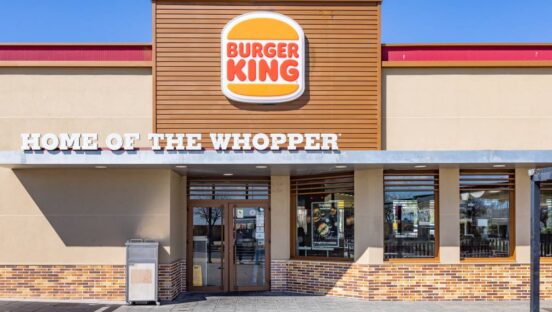RBI chairman Patrick Doyle entered the company at the end of 2022 on a mission to improve franchisee profitability across the portfolio. With a full year under his belt, the executive already has more than enough data to back up his promise.
The company reported Tuesday that average profitability per U.S. franchised restaurant (or Canadian restaurant for Tim Hortons) grew more than 30 percent in 2023.
Burger King U.S. saw average profitability per unit rise nearly 50 percent from $140,000 to more than $205,000 in 2023. At Popeyes, it increased 17 percent year-over-year from $210,000 to $245,000. Tim Hortons Canada’s average per-store profitability jumped to $206,500, up more than 30 percent from around $162,200 in 2022. Firehouse Subs saw a leap too, growing 38 percent from $80,000 to $110,000.
“I strongly believe that we must deliver our part of this equation,” Doyle said during RBI’s Q4 earnings call. “But ultimately, execution is in the hands of our franchisees and those that do it better make way more money. That should be inspiring for everyone.”
Although proud of the accomplishment, the chairman emphasized that RBI’s job isn’t done yet. He noted that each brand must continue to improve operations because “better operators have better profitability on average.” For instance, “A” operators for each brand generated restaurant profitability that was 30 percent higher than the system average. Tim Hortons’ and Firehouse’s “A” franchisees have already achieved RBI’s long-term profitability targets, which Doyle plans to share during an investor event on Thursday.
For Burger King, the increased profitability has major implications for the $400 million Reclaim the Flame program. As part of the plan, the franchisor agreed to invest $120 million in the U.S. advertising fund over 2023 and 2024 to grow traffic and accelerate sales. After this investment period, franchisees agreed to increase their advertising fund contributions if certain profitability thresholds were met.
Operators needed to reach $175,000 in per-store profitability to raise their contributions from 4 percent to 4.5 percent in 2025. This benchmark was surpassed by more than $30,000 last year. Should average franchisee profitability reach $230,000 by year-end 2026, the elevated ad fund contribution would remain in place through 2028.
“In terms of BK U.S. in the fourth quarter, it’s hard to quantify the exact breakdown, but I do think there was a positive impact from the advertising spend,” RBI CEO Josh Kobza said. “We’re investing more, and I think the team is doing a wonderful job on the effectiveness of that advertising.”
To pair with the improved profitability, all brands reported positive sales numbers for the fourth quarter and fiscal 2023.
Burger King’s domestic same-store sales lifted 6.4 percent in Q4, lapping 5 percent growth in the year-ago period. For the year, comps lifted 7.5 percent, rolling over 2.2. percent in 2022. Popeyes U.S.’s same-store sales grew 5.8 percent in Q4 and 4.8 percent in 2023, and Tim Hortons Canada saw comps increase 8.7 percent and 10.9 percent in Q4 and 2023, respectively. Firehouse’s domestic comps moved up 3.8 percent in the fourth quarter and 4.2 percent on the year.
Burger King finished with 6,778 U.S. stores and 12,240 international outlets in 2023. Tim Hortons had 3,894 stores in Canada and 1,308 in the rest of the world. Popeyes ended last year with 3,051 units domestically and 1,177 internationally. At Firehouse, there were 1,195 domestic restaurants and 17 international outposts.









